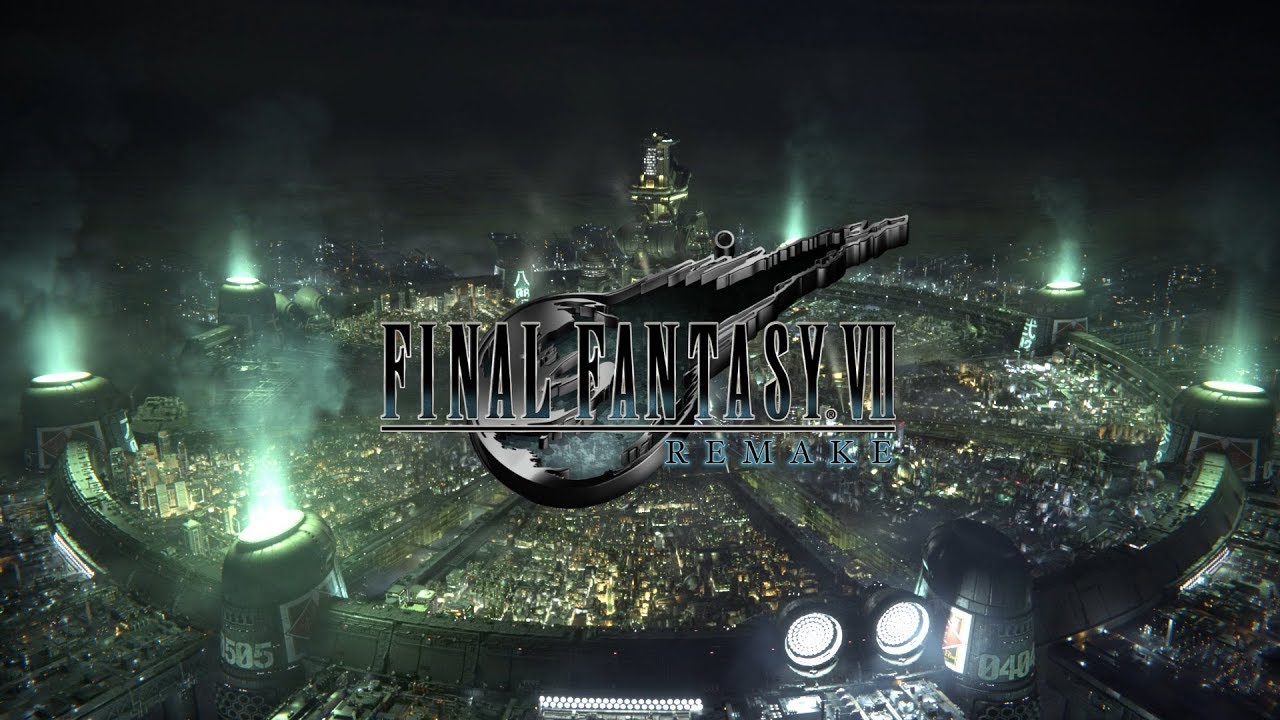If you were a fan of role-playing games in the nineties, chances were that you owned a PlayStation. Sony’s original console was well liked for its vast and diverse library, and was especially loved by JRPG fanatics because so many were developed for it. From Shadow Madness and Wild Arms, to Chrono Cross and the Final Fantasy series, there was a lot available for those with interest, time and money on their hands. None were ever as well received or as popular as Square’s Final Fantasy VII, though, as that early 1997 release quickly cemented itself in ‘Best Game of All-Time’ discussions alongside the likes of the N64’s The Legend of Zelda: Ocarina of Time.
Those who were lucky enough to own and play the original undoubtedly have fond memories of it that persist to this day. Although some of its qualities may have been tinted by the rose coloured classes of nostalgia, it’s tough to argue with anyone who claims Final Fantasy VII as their favourite game. It was simply that good. A late nineties epic that pushed gaming forward, and provided even more proof that the medium needed to be taken seriously as an art form and storytelling device, as opposed to a simple form of entertainment for children.
Although I didn’t own a PlayStation until the end of its generation, I was lucky enough to play Final Fantasy VII and experience its fantastic, multi-disc campaign. I’m regretful, though, because my time with the game didn’t end with scrolling credits. I got to the last area (the crater, if I’m not mistaken), but was too under-powered to do much damage to the bosses. I should have gone back and spent some of my time off from school that summer grinding to level up, but I didn’t. It seemed boring, and was something I decided to put off. Of course, as is often the case, it never happened, and I never did finish that game. Decades later, I’m mad at myself, because I feel like I missed out.
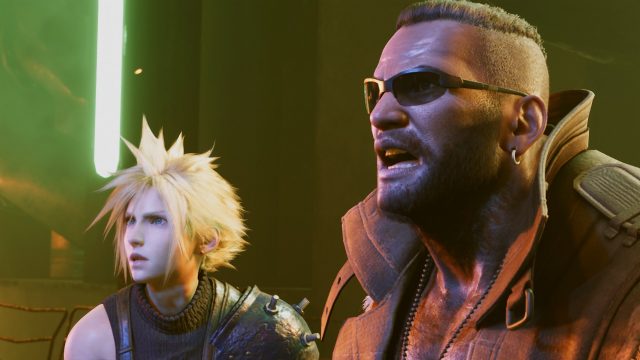
Fast forward to this very month of April, 2020, and Final Fantasy VII is on the tip of numerous tongues again. After many rumours, numerous delays and a lot of time spent waiting, the much wanted and anticipated Final Fantasy VII Remake has become a playable reality. However, instead of being the full, all encompassing update that we hoped it would be, this is only the first of possibly three parts. As revealed a couple of years ago, Square Enix has, in fact, split the original story up into installments, and this is just the Midgar portion it. The opening portion, I should say. That said, this is still a good, thirty hour-long RPG, which can be extended by tens of hours if you’re someone who likes to do absolutely everything and complete games on their most difficult settings.
Due to high demand, we were unable to obtain a review code. Instead, we used our own money to purchase a physical copy of the game, and pre-ordered it close to a year ago when it was discounted during E3-related promotions. I received it two days early (on the 8th of April), but didn’t get starting it until the 10th. Reason being is that I wasn’t sure if I should open and play it, because I had stopped playing JPRGs years ago, and wasn’t sure if it would be for me or if I’d regret spending the money. In the end, I decided to open it up and give it a shot, because I loved the original game and didn’t want to miss out, or wait months for the library to get it. I’m glad I did, too, because I was pretty impressed with what I played, and don’t regret the thirty one and a half hours I spent playing through this thing.
I wanted to share all of the above for honesty’s sake. I’ll never call myself the biggest Final Fantasy fan, or claim to be a JRPG guru, or anything like that. However, I am a longtime gamer, played quite a few of them in the past, and wanted to share my opinion on this game after purchasing it and playing it from start to finish over the course of about two weeks. The result may not be the most in-depth review you’ll find on the Internet, for obvious reasons, but it will be honest and as thorough as I’m able to provide.
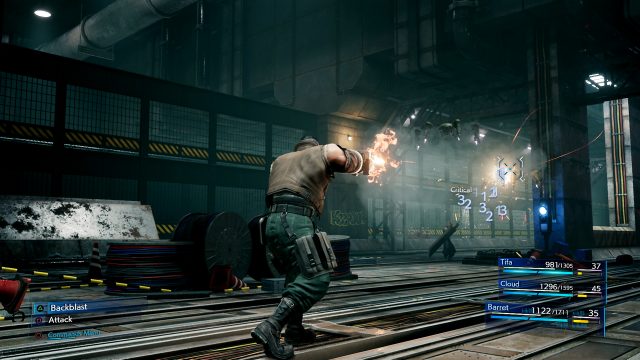
Upon opening the Final Fantasy VII Remake, the first thing I noticed was that it’s a two disc affair, which is kind of fitting given how many discs the original shipped on. If I’m not mistaken, it was a four CD game back then, in an era where multi-disc RPGs were very common. This time around, disc one is for installing the beefy experience, while disc two is the play disc. I popped the first one into our review PS4 Pro and it installed in about 30 minutes or so, with a final file size of just shy of 90gb. I then had to change the discs, and was able to play without waiting for anything more.
Then came the nostalgia. The basic, but very fitting menu, and the iconic music too. It was a nice trip back to better days. Truth be told, this was a great distraction to have during Covid-19 social isolation.
Things begin in the industrial and very advanced city of Midgar, where we meet Cloud, Barret and other members of the ecoterrorist group, Avalanche, as they disembark a rather iconic train at a very familiar digitized station. It doesn’t take long before they’re spotted and forced into combat beside the tracks, between ticket booths and inside the station proper. This is an action-packed introduction to an engrossing game, and does a good job of showing off the revamped combat system, which isn’t turn-based any longer.
This time around, the combat system is much more action-oriented, and is more accessible than almost any other Final Fantasy I’ve ever played because of that. This doesn’t mean it isn’t difficult, because some battles get pretty challenging, especially near the end. At least they did for me. I was able to finish the game on normal, but contemplated changing it to easy for the second last boss, because he kept spamming me with a nearly one-hit kill move. I didn’t, and am glad that I did not, because I ended up defeating him without too much difficulty during my next session. For whatever reason, he didn’t use that attack as much then.
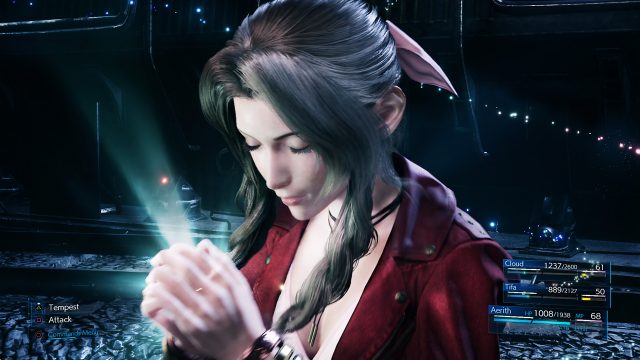
The combat isn’t static at all. Instead, you’re able to freely move around enemies and attack weak points that may be on their backs. Switching between characters is as easy as pressing up or down on the d-pad, as well, and it’s important to do so. While the other members of your party will attack and defend by themselves, they won’t do a whole lot, and many have complained that they stand around too much. If you don’t switch between Cloud, Barret, Tifa and Aerith (depending on who’s with you at any given time), you’ll potentially have issues. There are times, though, when only one of the playable characters is usable, as they sometimes go off on their own, or even split up into pairs.
Cloud will likely be your party leader and main character throughout most of the game, and from my experience, he’s also the most powerful. He carries his trusty sword, but can find or purchase several others throughout this campaign, much like the others with their respective weapons. Pressing square will initiate a basic attack, and doing so repeatedly will lead to multiple attacks, like in an action game. However, unlike certain action games, this one requires blocking, healing and careful watching of an ATB gauge that fills up as you attack. Once it’s been filled to a certain point, you can use items, cast spells or perform one of each character’s special abilities, such as Cloud’s triple slash or his powerful spearing move. Tifa has a damaging uppercut, Barret can pummel enemies with many deadly bullets until his ATB gauge empties, and Aerith also has some magical options.
Since I’m more of an action gamer, I was guilty of going a bit overboard with my attacks and not pressing block as much as I should’ve. That made certain fights more difficult than they needed to be. The same was true of not using the assess or magnify materia as soon as I discovered them. Still, I only died about five times during my thirty-one hours, so it’s not like I was terrible at the game. I did, however, find that the blocking mechanic wasn’t as responsive as it could’ve been, because it wouldn’t always register when I’d hit the shoulder button. Also, one of my biggest complaints here is that the ATB gauges sometimes take a while to fill up, leaving you without the ability to use items.
Each of the several playable characters in this first of potentially three parts also has his or her own limit break move, and more can apparently be unlocked, though I didn’t earn any additional ones. Cloud’s is a devastating cross slash, Barret’s is a very offensive fire in the hole shot, and Tifa’s is a somersault, while Aerith’s is more healing based. Their limit break meters will independently fill and become available for use during certain, lengthy battles, but they’re not always available. Summons are also pretty rare, and only seem to ever be available during boss battles. The game tends to pick and choose when it wants to make these things available to you, which is a questionable move. I remember being able to use summons against regular enemies back in the 90s or early 2000s when I played the original version of this campaign, but things change.
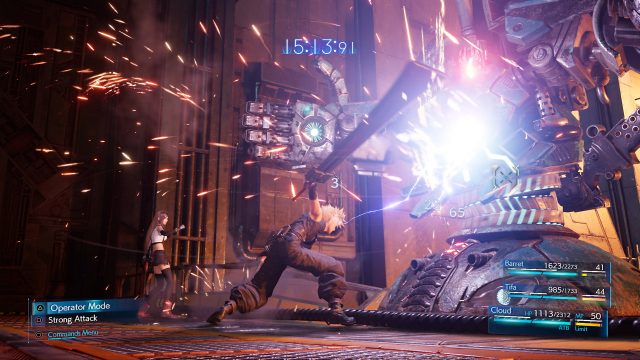
Along with unique materia loadouts, each of our planet loving heroes can carry a different summon. Ifrit is the first one you’ll find, and others are of the more optional/discoverable variety. For instance, the Choco and Mog summon is hidden in one of the game’s lengthier chapters, while Shiva needs to be fought in a VR simulation before she is unlocked for use. Said VR sims are part of a series of side quests doled out by Chadley; a Shinra scientist who wants Cloud and company to provide data pertaining to different combat tactics and abilities. As you fight enemies, you’ll make progress in this venture, but it will take effort to actually complete everything he asks. With each step of progress, though, you’ll earn the ability to purchase different types of specialized materia (aka. magic) from his shop, all of which he’s heavily discounted as a thank you for the assistance.
There’s quite a bit of hidden materia in this game, too, and some of it can only be accessed by moving cranes in a certain way during a couple of different (and kind of annoying) crane puzzles. These are found within a chapter that is set within a destroyed and abandoned underground highway. Other types of materia can be bought at shops, where it’s also possible to buy weapons, special items and all manner of potions and aides.
Knowing how to use materia well will make things a lot easier as you play through the Final Fantasy VII Remake, especially if you decide to go back through chapter select and replay the campaign on hard, because it apparently doesn’t allow for items. I honestly don’t know why anyone would want to do that to themselves, but I respect the fact that different people enjoy different things. I could never see myself taking a run at hard mode, because it just wouldn’t be enjoyable for me, but that’s me. To each their own.
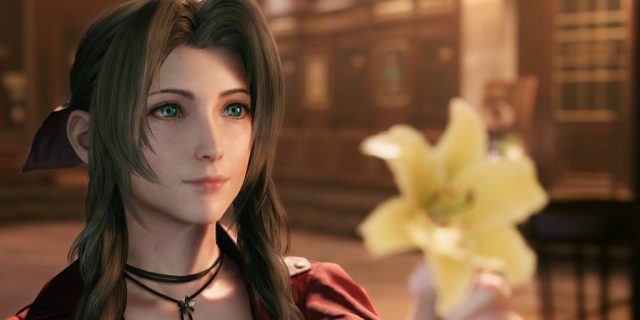
Getting back to the base combat system, it’s important to note that Cloud has two different settings, which can be toggled on and off by pressing triangle. The first is operator mode, which allows for basic attacks and gives him the freedom to move around quickly, including rolling away from enemies. The other is punisher mode, which slows Cloud down significantly but also allows him to attack much more quickly and with a lot more damage. This is really helpful for damaging strong enemies, but is toggled off any time you press circle to roll away and evade.
Of course, being in punisher mode also makes Cloud more vulnerable to attacks. That’s one of the trade-offs here, with the other being his drastically reduced speed and added weight of movement. There’s a risk and reward to practically everything, though.
No matter which mode Cloud is in, your goal will always be to stagger enemies as quickly as possible. This is done by attacking them, which pressures them and ends up filling a bar that leads to them being staggered. Whether this happens, and how quickly it does, depends on the types of attacks you’re using, because each enemy has its own weaknesses. Using assess to learn more about a foe is a great aide here, because it basically tells you what to use in order to down (or stagger, as the game likes to call it) an enemy as quickly as possible. Then, once they’re staggered, they’re open to more damaging attacks and cannot mount any sort of defense for a short period of time.
Unlike the original game’s randomized battles, this Remake allows you to prepare for fights by showing (at least most of) what you’ll be up against. It’s been this way for a while with RPGs, so it’s nothing new. That said, being able to see the enemies on screen before you engage with them is preferable to randomized battles, which would sometimes occur at the worst possible moment.
One of the best things about this update is the fact that there are numerous types of enemies to battle. This keeps things from getting too monotonous, and forces you to learn the strengths and weaknesses of different human, organic, robotic and animalistic creatures. Assess will come in handy here, as it will tell you the weaknesses of most foes; especially bosses who may have a few different parts to target.
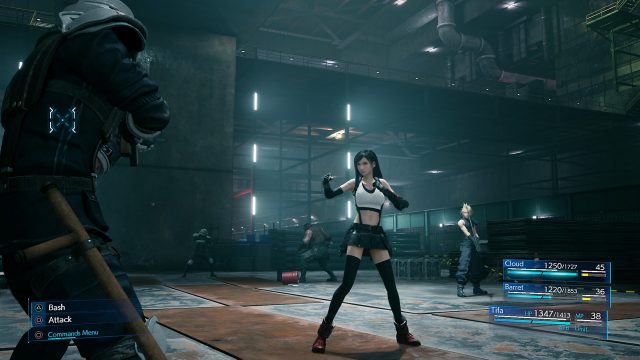
Speaking of bosses, there are quite a few spread throughout the totality of this first part of the Final Fantasy VII Remake. Many are robots, while some are odd creatures. Others are human, such as Shinra’s turks. Overall, though, they’re a mixed bag. Some are a lot more enjoyable to fight than others, and certain ones aren’t terribly well designed. For instance, there’s a boss in chapter 9 that is absolutely no fun to battle. I beat it the first time I fought it, but did not enjoy any part of it. Furthermore, there’s the second last boss, which I mentioned being a bit cheap above. Sure, I could be better at this game, but too many of its bosses were similar and uninspired.
The same is unfortunately true of the approximately 26 different side quests found within this campaign. While some are solid and end with enjoyable optional boss battles, too many others are little more than tedious fetch quests. Completing all of these side quests will add quite a bit of time to your playthrough, and will sometimes provide you with interesting and unique items. There are even moogle medals, which can be turned in to a special shop run by kids, for some pretty impressive bonuses, like specialized skill upgrades.
When I play a game, I generally try to do as much as I can without going overboard, in order to ensure a pretty complete play through. I did that here, but undoubtedly missed things, because my 31.5 hours paled in comparison to the 50-60 hours others said they’d played for. I tried to do most of the side quests, but some remained grayed out, presumably because I didn’t complete their predecessors. For example, I skipped one that involved going around and finding missing cats because it seemed tedious, even though it’s not something I would avoid in real life because I love those furry things. There was another where I needed to deliver medicine, but couldn’t find the vaguely described person who I was supposed to give it to and gave up. That said, I did between 60 and 70% of them, which is kind of low for me to be honest. I searched the open parts of the map (which were mostly town-like spaces, such as the Sector 7 and Sector 5 slums) for more, but didn’t find any others. I only missed finding maybe four or five, though.
As is often the case, the Final Fantasy VII Remake also features mini-games, which are usually tied to trophies. There are several strewn throughout the campaign’s 18 chapters, and that doesn’t count the two motorcycle-based segments where you must attack and defend yourself from goons and a giant mech while driving. Some of these activities are tougher than others, and the pull ups one is definitely no joke. Thankfully, the dancing and squats ones are much more lenient and far easier to control. My favourite, though, would have to be the Whack-A-Box challenges, which give you a brief amount of time to score as many points as possible by — as you’ve likely surmised — breaking boxes. There are 50 and 100 point boxes that don’t take much to damage, and then there are the massive, 1500 point ones that can take a beating from basic or special attacks before going down. The goal is to strategize which ones you’ll go for, while trying to hit as many time extending ones as possible. I liked this one so much that I did it twice on normal, then completed it on hard.
Another optional activity comes in the form of a coliseum, which features additional battles that one can choose to partake in, as well as a VR simulator. Both do factor into the story, but feature more content that doesn’t need to be played in order to complete the campaign proper. Completing them will provide you with special bonuses, which is always nice. After all, certain items offer some pretty nice advantages when equipped, including revival earrings that can bring downed party members back to life, amulets that make healing items more potent, and the like.
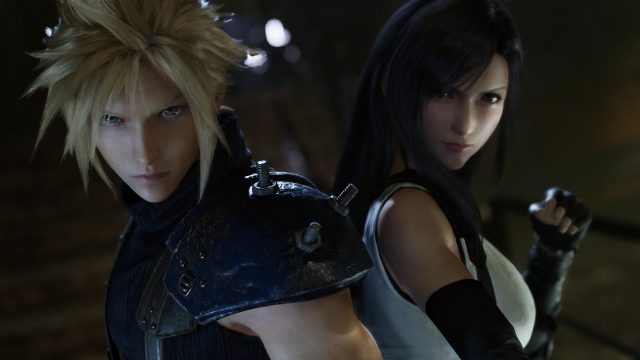
Also worth noting is the fact that your success and your choices (including which dialogue you select when given the option) can affect how things play out. For instance, good driving while under duress can lead to Jessie — who’s a walking, talking sexual harassment case — kissing Cloud. Other choices affect which dresses the characters wear at a certain point in the game. I won’t say much more out of fear of spoiling things for newcomers.
Of course, this is just the first part of what will likely be a three part remake, and we have no idea when the next one will release. If things turn out like they did here, it could be a few to several years before we get Final Fantasy VII Remake: Part 2, but who knows. We were all skeptical when Square Enix announced that they would be releasing this thing in installments, but with this entry they’ve proven that they’re capable of taking one engrossing, 30-50 hour-long RPG and turning it into multiple, 30 or so hour-long parts. At least, they were able to do it well with this inaugural portion.
The downside here is knowing that this isn’t a full game despite its title. Even though I knew that I wasn’t going to get the full experience for my $60, and eventually came to terms with it, I could never shake the disappointment. I respect how long it takes to make video games these days, and how expensive it is, but just this one part has been in development for quite a long time. Full RPGs have been crafted and released in less time, and other developers have managed to make and release longer games. It’s hard not to see this as a bit of a frustrating money grab as a result, although I hate thinking that way because I quite enjoyed my time with it.
Being that this is only the Midgar portion of the narrative, you can expect to spend all of your time within that industrial city, with its affluent main level and the disparaged slums underneath. This will involve treks between sectors, ventures into mako reactors (which anger Barret because they’re sucking the life out of the planet) and into unique places like chapter 9’s Wall Market, which is pretty but doesn’t offer as many things to do as I would’ve hoped. There’s no true open world content here, nor is there any travel to outside areas, but we were told this years ago. For the most part, they’ve done a pretty good job of turning the first part of Final Fantasy VII into a pretty full fledged, 30 hour RPG of its own. That said, it definitely felt padded at times and left me feeling like something was missing. Obviously, something is.
The narrative mostly works in this extended fashion, and the additional length and stretching allows for more depth to be provided to characters like Aerith, Baird and Cloud. It also allows us to get a better sense of what Midgar is like, and how little Shinra cares about the people it’s expected to protect. Not to mention the disparity between the Shinra employees and the people living in the dusty, ramshackle slums below. However, certain chapters felt like they existed to pad the game’s length, as did some of the side quests. Examples include the crumbled and forgotten highway, and a lengthy railways section which felt a bit too long. This feeling was made stronger by the fact that there was backtracking to some of these areas in other chapters. It’s not a huge deal, though, as most of the campaign felt important and necessary despite being a stretched out version of a game and storyline from 1997.
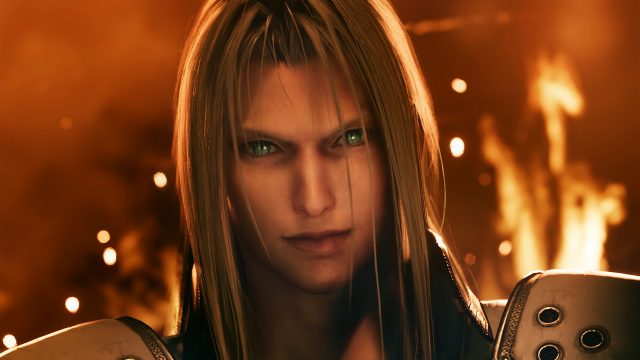
Sephiroth also doesn’t get much depth here, and may confuse new players. That said, he’ll surely get a lot more screen time (and depth) in the next couple of parts.
When I first booted this thing up and saw it in action, I was thoroughly impressed. To put it simply, the Final Fantasy VII Remake is a jaw droppingly beautiful game. Its character models are stunning, its attention to detail is often very impressive, and it’s incredibly easy on the eyes for the most part. You see, as pretty as much of this game is, it has some surprisingly low resolution and downright poor textures, which I started to notice more as I progressed through its latter half. I don’t know if the Coronavirus affected deployment of a planned day one patch, but certain textures are shockingly low quality. This has bothered a lot of people on message boards, but didn’t take much away from my experience, or affect how much I liked the game. I was quite surprised to see them, though, especially given how much effort and care was put into the characters and most environments.
Other than the aforementioned texture issue, things ran very well on our PS4 Pro. I didn’t encounter any crashes or other major issues, and the frame rate remained stable and smooth. This quality and lack of other issues made the low resolution textures stand out that much more.
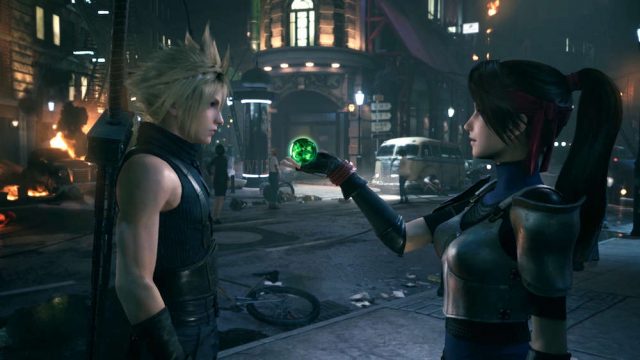
I would also be remiss if I didn’t mention how great the music is. Listening to this soundtrack brought back a lot of great memories, and infused my mind with tons of nice nostalgia. I didn’t think I’d remember the music much, because it’s been twenty or more years, but some of it was appreciably familiar. They did a great job remastering and redoing certain tunes, and I appreciated the fact that there were around thirty-five different records to find or purchase throughout the campaign, all of which could be listened to at jukeboxes.
The voice cast also did a very good job, overall, and breathed life into characters who felt real despite being computer generated. I was especially impressed by Aerith’s voice actress, although Cloud’s was no slouch, nor were the others really. What surprised me most, however, was hearing Matt Jones’ voice come out of Wedge. As soon as I heard Wedge speak, I knew who it was, because I’ve watched a lot of Breaking Bad and Mom. It took me out of things for a second, but I must say that he really fit the part.
With all that having been said, it’s time to end this review by saying that the Final Fantasy VII Remake is well worth checking out, especially during this time of stress and quarantine. For the most part, it’s a very well made and expanded take on the first part of the original, 1997 masterpiece, and does what is considered by many to be the best game of all-time justice. However, it isn’t a flawless experience, nor is it the absolute gem that many of us were hoping it would be. There’s definite padding to be found within, and too many of the side quests and boss battles feel uninspired because they lack creativity. There’s also the low quality texture issue, but that will hopefully be fixed soon. Those things don’t keep this from being a very good game, but they do keep it from being a full fledged masterpiece like its source material was.
This review is based on the PlayStation 4 timed exclusive, which we purchased.

